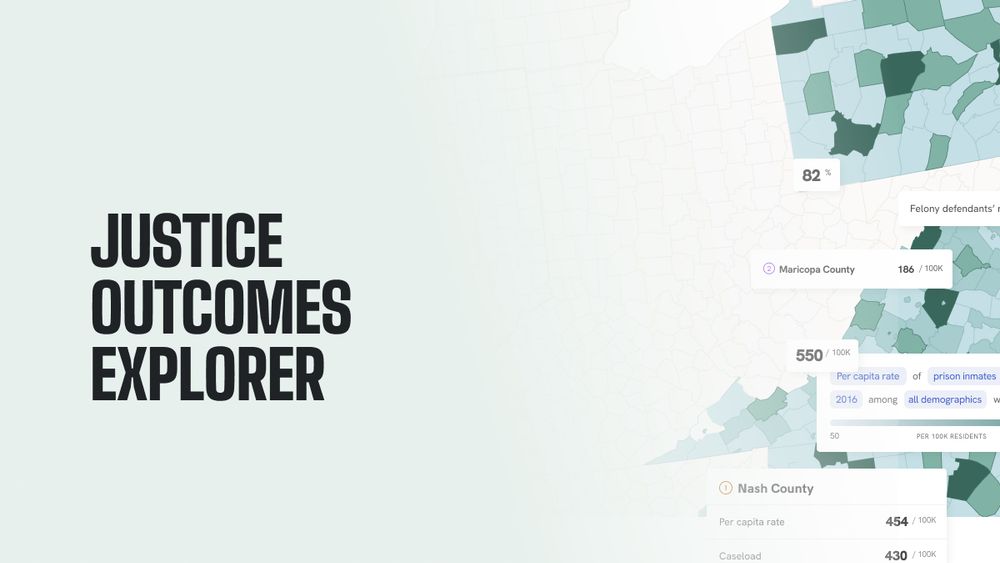2/2:
2. Incident estimates—The number of specific criminal
acts involving one or more victims.
3. Prevalence estimates—The number or percentage of
unique persons who were crime victims, or of unique
households that experienced crime.
29.09.2025 21:04 — 👍 0 🔁 0 💬 0 📌 0
1/2: I think you might have what BJS calls the prevalence rate in mind? BJS calculates a few different rates based on NCVS data:
1.Victimization estimates—The total # of times
that persons or hhs were victims of crime. For
personal crimes, the # of victimizations is the
# of victims of that crime.
29.09.2025 21:03 — 👍 1 🔁 0 💬 1 📌 0
MEASURING LAWYER MENTAL ILLNESS: EVIDENCE FROM TWO NATIONAL SURVEYS
The American Bar Association declared a "well-being crisis" among lawyers, but the empirical basis for this claim has been contested in recent years.
n/n Conclusion: NSDUH data supports concerns about lawyer mental illness & alcohol misuse relative to peers/public more strongly than NHIS. Discrepancies highlight measurement challenges. Need more research on causes & additional surveys to resolve differences. Paper: papers.ssrn.com/sol3/papers....
09.05.2025 13:26 — 👍 0 🔁 0 💬 0 📌 0
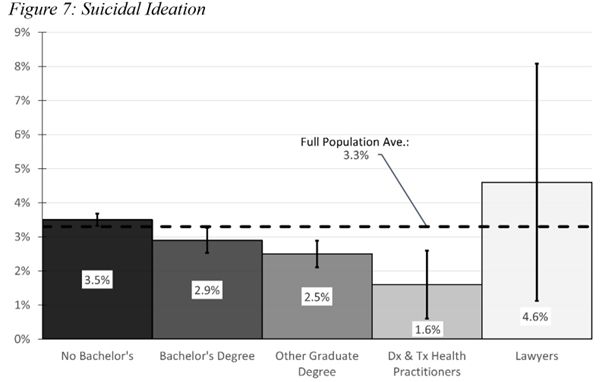
10/n What about suicide? NSDUH finds higher suicidal ideation among lawyers, although results are imprecisely measured. However, CDC data shows lawyer suicide rates are actually lower than the average across all industries.
09.05.2025 13:26 — 👍 0 🔁 0 💬 1 📌 0
9/n Who has the highest rates? NSDUH data suggests:
Younger lawyers (26-34) report higher psych. distress & alcohol abuse than older (50+)
Female lawyers report higher psych. distress than male lawyers
Male lawyers report higher alcohol abuse than female lawyers
09.05.2025 13:25 — 👍 0 🔁 0 💬 1 📌 0
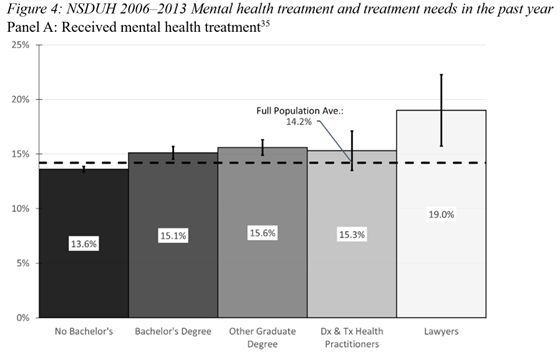
8/n Are lawyers reluctant to seek help? Data says maybe not. Both surveys show lawyers access mental health treatment at higher rates than other groups. Key barriers cited aren't cost/stigma, but lack of time & belief treatment won't help / they can handle it.
09.05.2025 13:25 — 👍 0 🔁 0 💬 1 📌 0

7/n The NSDUH includes more mental health measures. Using a clinically validated model, it finds 21% of lawyers had any mental illness in the past year & 6.3% had serious mental illness.
09.05.2025 13:24 — 👍 0 🔁 0 💬 1 📌 0

6/n Why the difference? We can’t say for certain. Harmonizing definitions doesn’t resolve it. It might be survey methods (NSDUH offers more privacy). We aren’t the first to notice the divergence in the two surveys, but we do note that the differences are correlated w/ occupation .
09.05.2025 13:23 — 👍 0 🔁 0 💬 1 📌 0
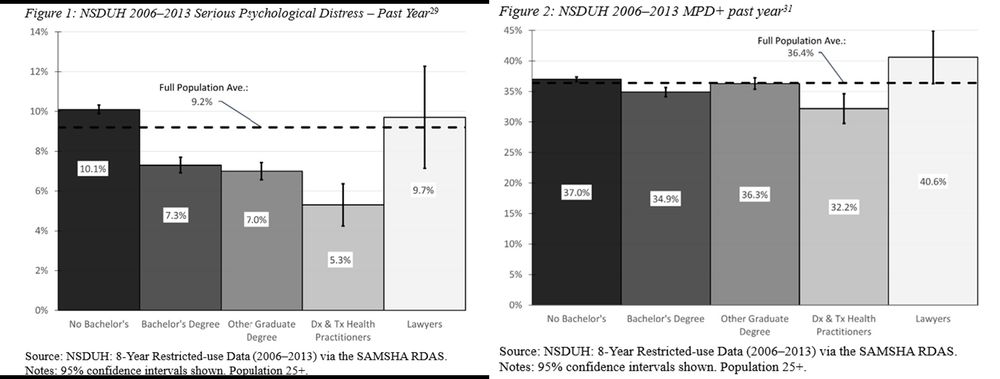
5/n What about mental distress? Here the surveys diverge. NHIS: lawyers have lower/similar distress than peers/public. BUT, in the NSDUH over 40% of lawyers report moderate/serious psychological distress in the past year! Significantly higher than peers & public.
09.05.2025 13:20 — 👍 0 🔁 0 💬 1 📌 0
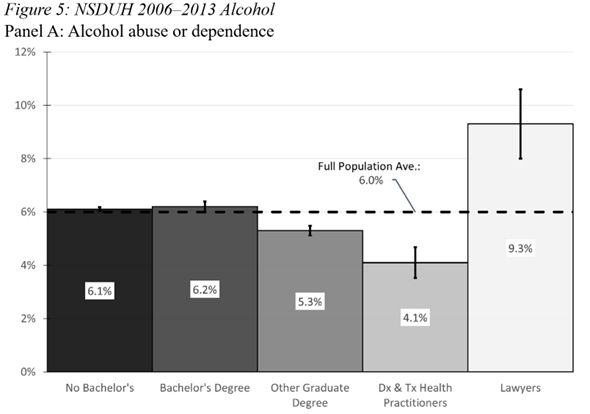
4/n First, what both surveys agree on: alcohol misuse. Both NHIS & NSDUH show lawyers have elevated rates compared to the public & similarly educated peers. NSDUH finds 9.3% alcohol abuse/dependence.
09.05.2025 13:14 — 👍 0 🔁 0 💬 1 📌 0
3/n We look at high-quality national surveys—National Health Interview Survey (NHIS) & National Survey on Drug Use & Health (NSDUH)—to measure mental illness & alcohol misuse. Surprisingly, we find conflicting results, but both surveys use nearly identical questions, high response rates, and weights
09.05.2025 13:14 — 👍 0 🔁 0 💬 1 📌 0
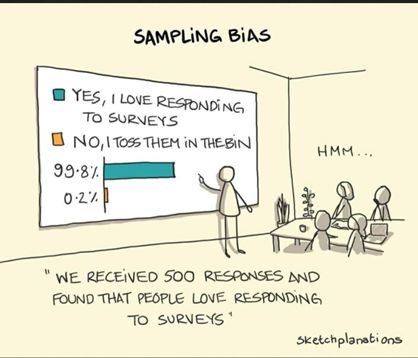
2/n In 2016, the ABA surveyed 12,825 lawyers from 19 states and found that 28.3% experienced depression, 19.2% experienced anxiety, and 20.6% experienced alcohol misuse. Later work notes that the survey was unlikely to be representative due to survey nonresponse bias.
09.05.2025 13:12 — 👍 0 🔁 0 💬 1 📌 0
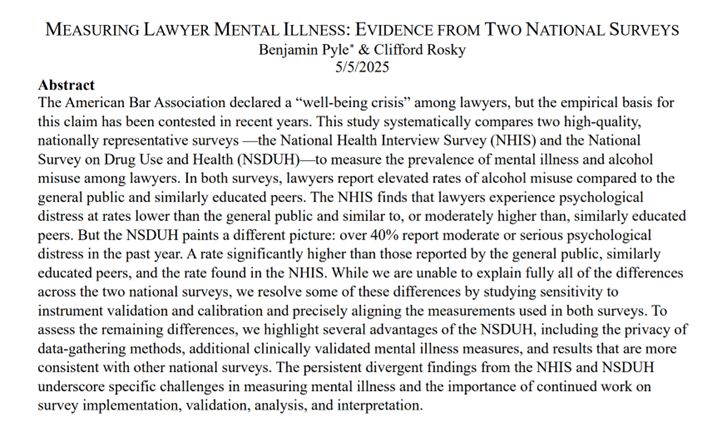
1/n May 6-10 is well-being week in law. How are lawyers doing? Clifford Rosky and I dig into the question in our new paper accepted at the Journal of Empirical Legal Studies. papers.ssrn.com/abstract=524...
09.05.2025 13:11 — 👍 0 🔁 0 💬 1 📌 0
Econ Prof living in OKC | Applied micro, Environmental/Energy/Labor mostly | Always have dirty hands 🪴👨🏼🌾 #nativeplants
🔗 www.travisroach.xyz
📸 https://www.instagram.com/littlelinwoodgarden/profilecard/?igsh=bGhmN29icGpnNXRj
Every worker deserves a good job, one that pays a living wage and includes robust benefits. NELP is leading the fight to make a good-jobs economy a reality.
Assistant Professor @ Carlson School
Labor, history, gender & family
Assistant Professor, Saint Louis University School of Law, Center for Health Law Studies. Health equity, race-gender-law, medical-legal partnership, regulatory compliance, pedagogy. #healthlaw
PhD Candidate in Economics at UMich
Member @Geo3550
andrewjoung.com
Assistant Professor at UGA Law. Criminal reform, video games, birds, music.
Law prof at University of Oklahoma (classes with "Crim" in the title). First gen. Cat person. Hiker. Mediocre tennis player.
Law Professor at William & Mary Law School. Criminal Law and Procedure
Psychotherapist and Wellness Educator
Once Upon A Time Lawyer
Recipient of the Ontario Bar Association's inaugural Orlando Da Silva Award for Improvement of Mental Health in the Justice Sector (he/him)
Law professor at Cornell
Subjects: litigation risk, torts, civil procedure
https://www.alexandralahav.com/
Law prof at Yale, LPE Associate Justice, all things political economy, but not yr grandpas version.
Law Professor. Advocate. Bar Reformist.
Saint Louis University School of Law.
Past President, Association of Academic Support Educators.
Assistant Professor, University of Houston Law Center
AI, Risk, Constitution, Economics
Economist studying crime policy. Assistant Professor at the University of Pennsylvania, Criminology Department.
pet dogs, fix commas, argue appeals
appellate & patent litigator
he/him. michigan law, illinois phd
Harry Kalven, Jr. Professor, University of Chicago Law School. Podcaster and Blogger at Divided Argument.
Law prof. Insurance and litigation finance geek.
Gary & Sallyn Pajcic Professor, Florida State University College of Law • Criminal Procedure, Criminal Law, Law & AI, Int'l Law • Music Worshiper • Master Mover & Suitcase Maker 🌈 https://law.fsu.edu/faculty-staff/nadia-banteka
University of Michigan Law Professor
Professor of Economics, University of Zurich @uzh-econ.bsky.social
www.ddorn.net








